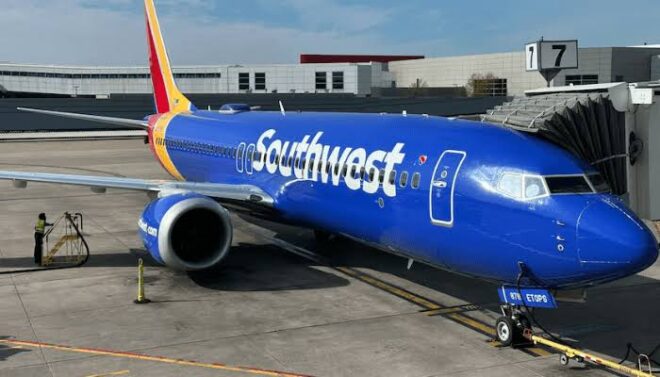
Southwest Airlines Faces Backlash as Passenger Sits Behind Deceased Traveler
In a shocking and distressing turn of events, a Southwest Airlines passenger recently took to social media to express outrage after being forced to sit directly behind a deceased traveler on a flight. The incident, which has sparked widespread debate and criticism, has raised serious questions about airline policies, passenger rights, and the protocols for handling medical emergencies on board.
The Shocking Incident
The ordeal began on a routine Southwest Airlines flight when a passenger suddenly suffered a medical emergency mid-air. Despite efforts to revive the individual, the passenger tragically passed away. The flight crew, adhering to standard airline procedures, decided to keep the deceased individual in their seat for the remainder of the flight rather than diverting or attempting an emergency landing.
However, what has enraged one particular passenger—and subsequently, the internet—is the decision to continue seating other passengers near the deceased traveler without offering them an opportunity to move. According to a viral social media post, the passenger behind the deceased individual claimed they were not informed about the situation until well into the flight and were left deeply uncomfortable and distressed by the experience.
Passenger’s Outrage and Viral Reaction
The passenger took to social media to share their experience, describing their horror upon realizing that the person in front of them had passed away. “I was sitting directly behind someone who had DIED, and no one even thought to move me or inform me properly,” the post read. The traveler described feeling trapped in an unsettling situation, criticizing the airline for its handling of the crisis.
Within hours, the post gained traction, amassing thousands of reactions, shares, and comments. While some sympathized with the airline crew and the difficult nature of handling a death mid-flight, others expressed outrage, arguing that the airline should have either relocated surrounding passengers or made an emergency landing.
Southwest Airlines’ Response
Following the online uproar, Southwest Airlines issued a brief statement expressing condolences to the deceased passenger’s family. However, the statement did little to address the concerns of the outraged passenger. “We deeply regret any distress experienced by our customers on board and extend our heartfelt sympathies to the family of the deceased,” the airline stated.
Despite this, critics argue that the airline failed to adequately address why passengers in close proximity were not given the option to relocate or why clearer communication was not provided. Some have also questioned whether the airline has proper procedures in place for handling such delicate situations.
Understanding Airline Protocols for In-Flight Deaths
While rare, in-flight deaths do occur, and airlines have specific procedures for handling them. Typically, if a passenger dies during a flight, flight attendants will attempt resuscitation if appropriate, but if the person is unresponsive, medical professionals (if present) or the crew may declare them deceased.
In most cases, airlines prefer to leave the deceased person in their seat with a blanket covering them rather than moving them to a different area of the aircraft, as moving a body mid-flight can be logistically challenging and distressing for other passengers. Emergency landings are usually only considered if there is a chance to save the person’s life or if specific legal or logistical concerns arise.